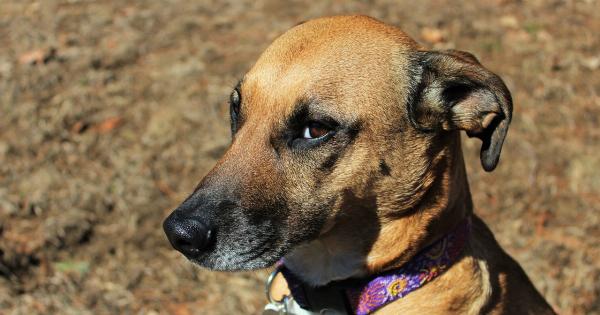Puppy toilet training is an essential aspect of owning a dog. It helps create a clean environment for both the dog and the owner, and it ensures that the dog develops proper hygiene habits.
However, toilet training can be a challenging process, especially for first-time dog owners. Fortunately, using positive reinforcement techniques can make the process easier and more effective.
Understanding Positive Reinforcement
Positive reinforcement is a training technique where rewards are given to reinforce good behavior. In the context of puppy toilet training, positive reinforcement involves rewarding the dog for going potty in the designated spot.
The Benefits of Positive Reinforcement
Positive reinforcement has several benefits over punishment-based techniques. Here are a few reasons why positive reinforcement is an effective way to train puppies:.
1. Creates a Positive Association with Toilet Training
Dogs respond well to positive reinforcement because they enjoy the rewards that come with good behavior.
By using positive reinforcement in toilet training, pet owners can create a positive association between going potty in the designated area and getting rewards.
2. Builds Trust and Confidence
Positive reinforcement builds trust and confidence between the pet owner and the puppy. If the puppy knows that it will be rewarded for doing something right, it will be more likely to repeat that behavior in the future.
3. Avoids Punishment and Fear
Punishment-based techniques can be harmful to the puppy’s mental health and can create a fear of the owner.
Positive reinforcement, on the other hand, focuses on the puppy’s good behavior and encourages it to continue those behaviors in the future.
4. Allows for Individual Progress
Positive reinforcement allows for individual progress as puppies learn at their own pace. The rewards can be adjusted based on the puppy’s progress, ensuring that it never feels overwhelmed or overstimulated.
How to Use Positive Reinforcement in Puppy Toilet Training
Positive reinforcement can be incorporated into puppy toilet training in several ways. Here are a few tips on how to effectively use positive reinforcement techniques:.
1. Choose the Right Treats
Choosing the right treats is essential for positive reinforcement to work effectively. The treats should be small, soft, and flavorful to keep the puppy’s attention.
The treats should also be high value, meaning that the puppy is willing to work for them.
2. Create a Positive Environment
Creating a positive environment is essential for positive reinforcement to work. The designated potty spot should be clean and free of distractions. The puppy should also feel safe and comfortable in the area to avoid any anxiety or fear.
3. Use Verbal Cues
Using verbal cues is an effective way to communicate with the puppy. The owner can use phrases like “go potty” or “do your business” to signal to the puppy that it is time to use the designated spot.
The verbal cues should be consistently used to avoid confusion.
4. Consistency is Key
Consistency is key in positive reinforcement. The rewards should be given every time the puppy goes potty in the designated spot.
Over time, the puppy will learn that going potty in the designated area leads to a reward and will begin to repeat the behavior.
Common Challenges in Puppy Toilet Training
Despite the benefits of positive reinforcement, there can be challenges in puppy toilet training that can create frustration for both the owner and the puppy. Here are some common challenges in puppy toilet training and how to overcome them:.
1. Accidents Inside the House
Accidents inside the house can be frustrating, but it is important to remain calm and not punish the puppy. Punishment-based techniques can create a fear of the owner and can make the puppy hide its accidents instead of using the designated spot.
Instead, owners should focus on rewarding the puppy when it goes potty in the designated area and gradually move the designated spot closer to the door.
2. outdoor distractions
Distractions outside like smells and other animals can divert the puppy’s attention from using the designated spot. Owners can overcome this challenge by ensuring that the designated spot is clean and free from distractions.
Verbal cues like “focus” or “look at me” can also redirect the puppy’s attention and help it focus on the task at hand.
3. Lack of Progress
Lack of progress can be frustrating, but it is essential to remember that puppies learn at their own pace. Owners should stay consistent and patient with the puppy and focus on rewarding small achievements.
Gradually moving the designated spot closer to the door can also help progress.
Conclusion
Positive reinforcement is a powerful tool in puppy toilet training. It creates a positive association with good behavior, builds trust and confidence, avoids punishment and fear, and allows for individual progress.
By using the right treats, creating a positive environment, using verbal cues, and staying consistent, puppy toilet training can be made more effective and less frustrating for both the owner and the puppy.


























